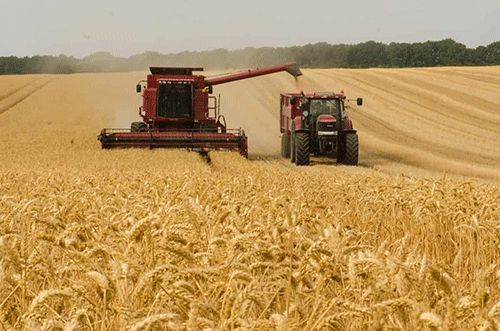The Namibia Agronomic Board (NAB) currently oversees three vital agronomic crops that are gazetted as controlled, namely: white maize, pearl millet (mahangu) and wheat. These crops are considered to be the staple food for thousands of Namibians.
The agronomic industry in Namibia is faced with many challenges, such as drought, high input cost, pests and diseases, although the number one challenge is recurrent drought.
At the same time, Namibia remains a net importer of the three agronomic crops – even though the farmers have a secured market through the grain marketing mechanisms, whereby import restrictions or close border periods are implemented during times of sufficient local production.
Production of agronomic crops, mainly white maize and pearl millet, takes place in both the commercial and communal areas under irrigation, as well as rain-fed and marketed to millers.
However, pearl millet is predominately produced in communal areas under rain-fed production – and wheat production takes place under irrigation in the commercial areas and government projects situated in the various communal areas.
There are currently no exports of agronomic products due to limited production. Therefore, the NAB provides services, such as the issuance of permits, implementation of marketing mechanisms and the provision of information services, which are aimed at developing the agronomic industry in Namibia.
As for wheat, the marketing of locally produced wheat grain is managed through the Wheat Marketing Mechanisms/Agreement, signed by organised producers and millers.
The marketing of wheat grains officially starts from the 1st of November to the 31 January every year.
There is no close or open border period for wheat, but allocations are made to millers to ensure the locally produced grain is marketed.
According to the latest production and trade statistics, the total domestic demand for wheat grain in Namibia stood at 144 939 tonnes per annum, translating into an average domestic demand of 12 078 tonnes per month.
Out of the total domestic demand recorded during the 2022 financial year, 18 498 (13%) tonnes were locally produced and 126 441 (87%) tonnes were imported from other
countries.
Meanwhile, pearl millet is one of the most important cereal crops in Namibia, making a huge contribution to the overall food security.
It is planted immediately on the first onset of the rainy season, mainly in the northern central areas of Zambezi, Kavango and Otjozondjupa regions.
Farmers produce pearl millet for subsistence purposes and sell the surplus grain in the formal and informal markets.
The marketing of locally produced pearl millets is managed through the Mahangu Marketing Mechanisms, signed between organised producers and millers.
The marketing starts from 1st June and ends when all the grains are taken up by the National Strategic Food Reserves and millers.
The marketing of locally produced white maize grains is managed through the White Maize Marketing Mechanisms as signed by organised producers and millers.
The marketing of white maize grains starts from the 1st of May every year until such time all the available grains are marketed to millers/silos.
To effectively and efficiently facilitate the marketing of locally produced white maize grain, the production data is collected at the beginning of each planting season to estimate the expected production, hence the tonnage to be taken up by local millers/silos.
This data is also expected to inform the determination of the expected availability of grain and the beginning of the close and open border period.


